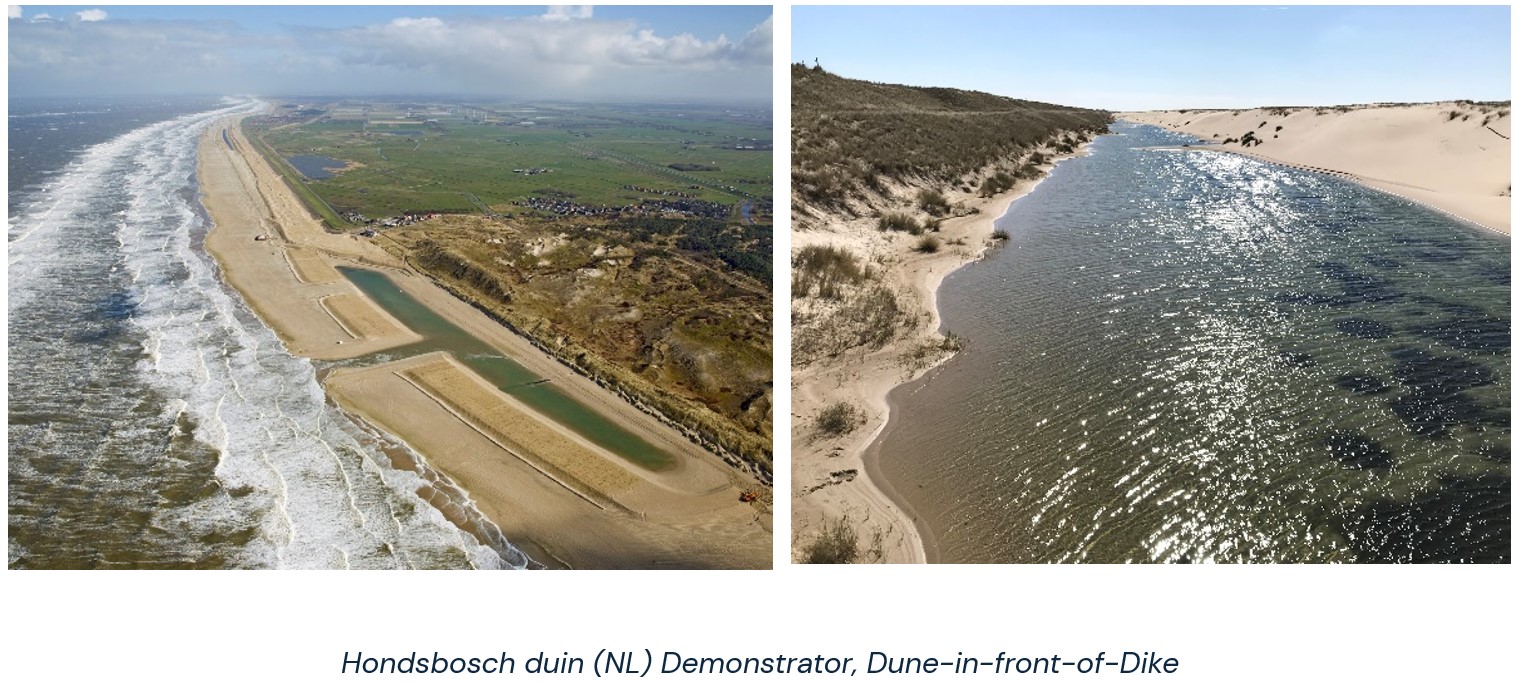In the pursuit of sustainable coastal management, research teams from Ghent University—including Ir. Afshar Adeli, Dr. Vincent Gruwez, Prof. Peter Troch, and Prof. Dries Bonte—and from TU Delft— Prof. Bas Hofland and Prof. Marion Tissier—have recently published a landmark report as part of the DuneFront project. This report marks a significant step forward in advancing our understanding of dune-dike hybrid Nature-based Solutions (DD-hybrid NbS). These solutions aim to revolutionize coastal infrastructure by seamlessly integrating biodiversity with resilient designs, capable of addressing socio-economic and environmental challenges.
A Bold Vision for Europe’s Coasts
DuneFront is focused on better understanding the potential of DD-hybrid NbS to create robust, adaptable, and aesthetically appealing solutions for coastal protection. In addition to their environmental benefits, these systems are designed to protect densely populated European coasts while ensuring ecological richness and resilience in the face of climate change.
The recently published report takes this vision a step further by studying existing hybrid solutions in action across four major European sea or ocean basins: the Mediterranean, Atlantic, North Sea, and Baltic. This comprehensive evaluation is crucial for identifying which design aspects are most effective in protecting coastlines and uncovering gaps in current methodologies.
A Pan-European Study of Hybrid Nature-Based Solutions
One of the key achievements of this report is its extensive documentation and comparison of DD-hybrid NbS design methods. The study covers 12 Demonstrators from six countries—Portugal, France, Belgium, the Netherlands, Germany, and Sweden—each facing unique environmental challenges. Out of these, seven Demonstrators were selected for in-depth analysis based on their contribution to coastal protection: Dunkerque, Sainte-Marie La Mer, Living Lab Raversijde, Middelkerke, Katwijk, Sankt Peter-Ording, and Ystad.
These locations are diverse in geography and functionality, providing a wide array of data that is invaluable for understanding the strengths and weaknesses of current DD-hybrid NbS designs. By analysing the methodologies, stability measures, and maintenance practices in use, the research team is helping to establish a foundation for future, more refined approaches to coastal protection.
Key Insights and Knowledge Gaps
A major highlight of the report is its thorough comparison of various design methodologies. These range from basic, non-specific approaches to highly detailed and adaptive methods. The study emphasizes the importance of selecting design methods tailored to local conditions, and the need for standardized, well-developed models to ensure the effectiveness of these hybrid systems.
The findings also reveal significant differences in how these systems are monitored and maintained. Some Demonstrators rely on advanced technologies, such as Digital Terrain Models (DTMs) and LIDAR scanning, while others implement simpler techniques like beach nourishment and surveys. This spectrum of methods underscores the need for continuous innovation in monitoring technologies to optimise coastal protection solutions.
Crucially, the report identifies a critical knowledge gap: the lack of unified methodologies for designing dune and dike systems together. While current practices often treat dunes and dikes as separate entities, the team argues that integrated approaches are essential for maximizing the effectiveness of DD-hybrid NbS. Questions regarding dune erosion, adaptive measures, probabilistic design, and the spatial relationship between dunes and dikes remain unresolved. Addressing these issues will help transform these knowledge gaps into actionable strategies for future coastal defenses.
A Vision for the Future of Coastal Protection
The insights gathered from this report are poised to have a lasting impact on the development of sustainable coastal infrastructure across Europe. By addressing the identified knowledge gaps, the research team is helping to pave the way for more resilient, adaptive, and inclusive coastal management practices.
Ultimately, the findings from this research contribute not only to the academic understanding of DD-hybrid NbS but also to the practical tools and methods needed for effective coastal protection. As climate change continues to pose increasing risks to coastal regions, the work in DuneFront is essential for shaping the future of coastal defense—creating solutions that protect both people and the planet.
Check out the full report here!
